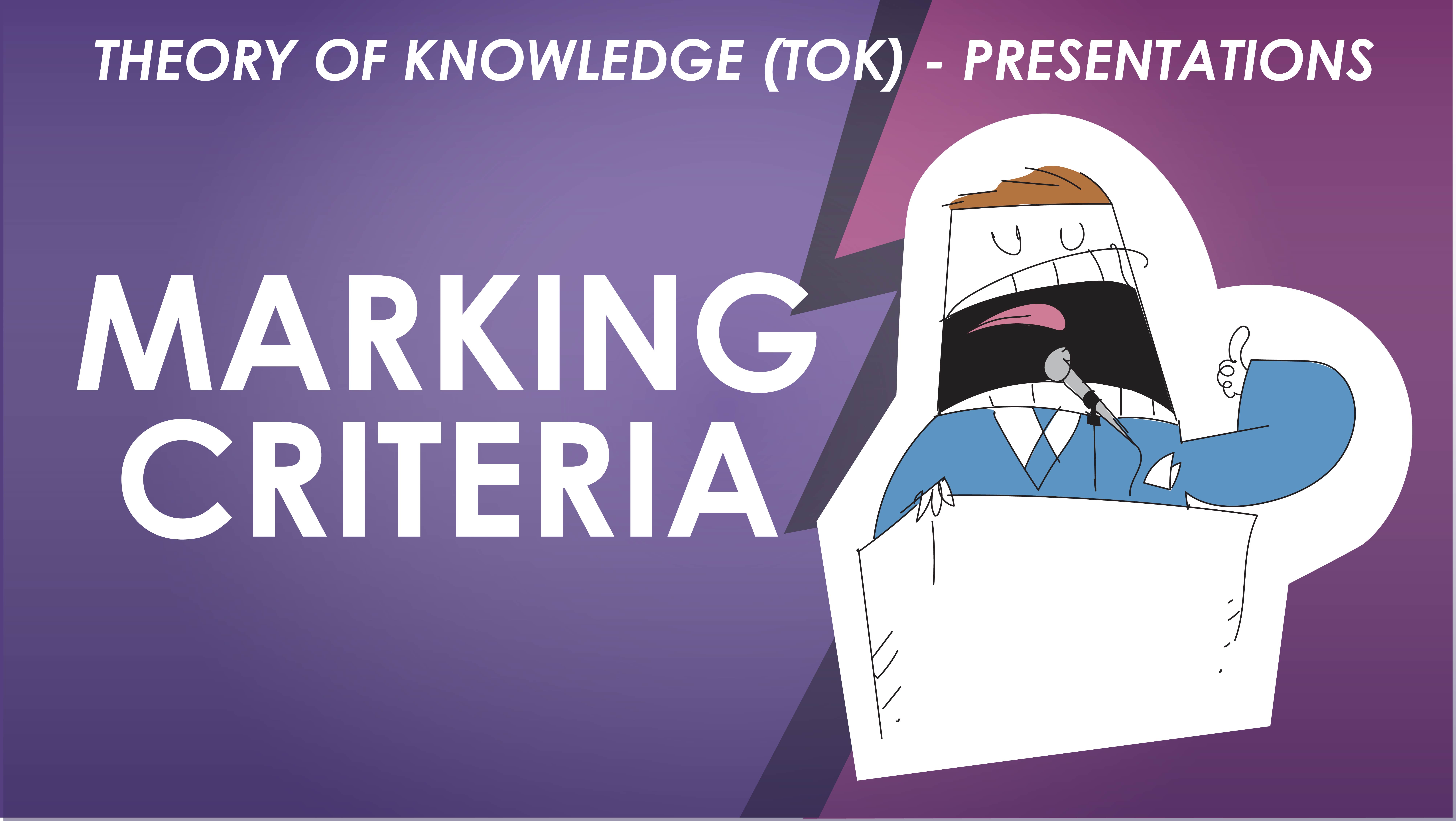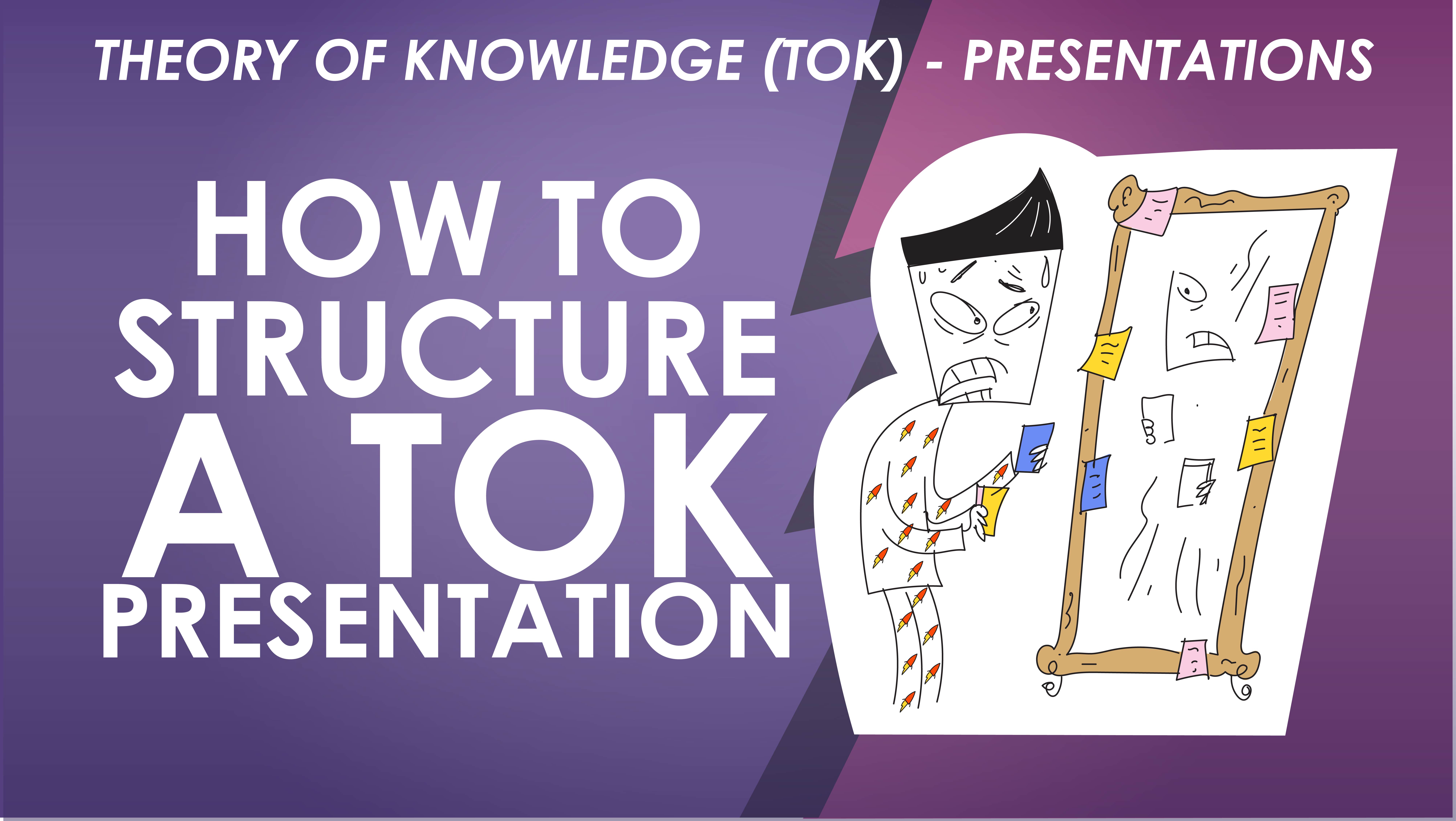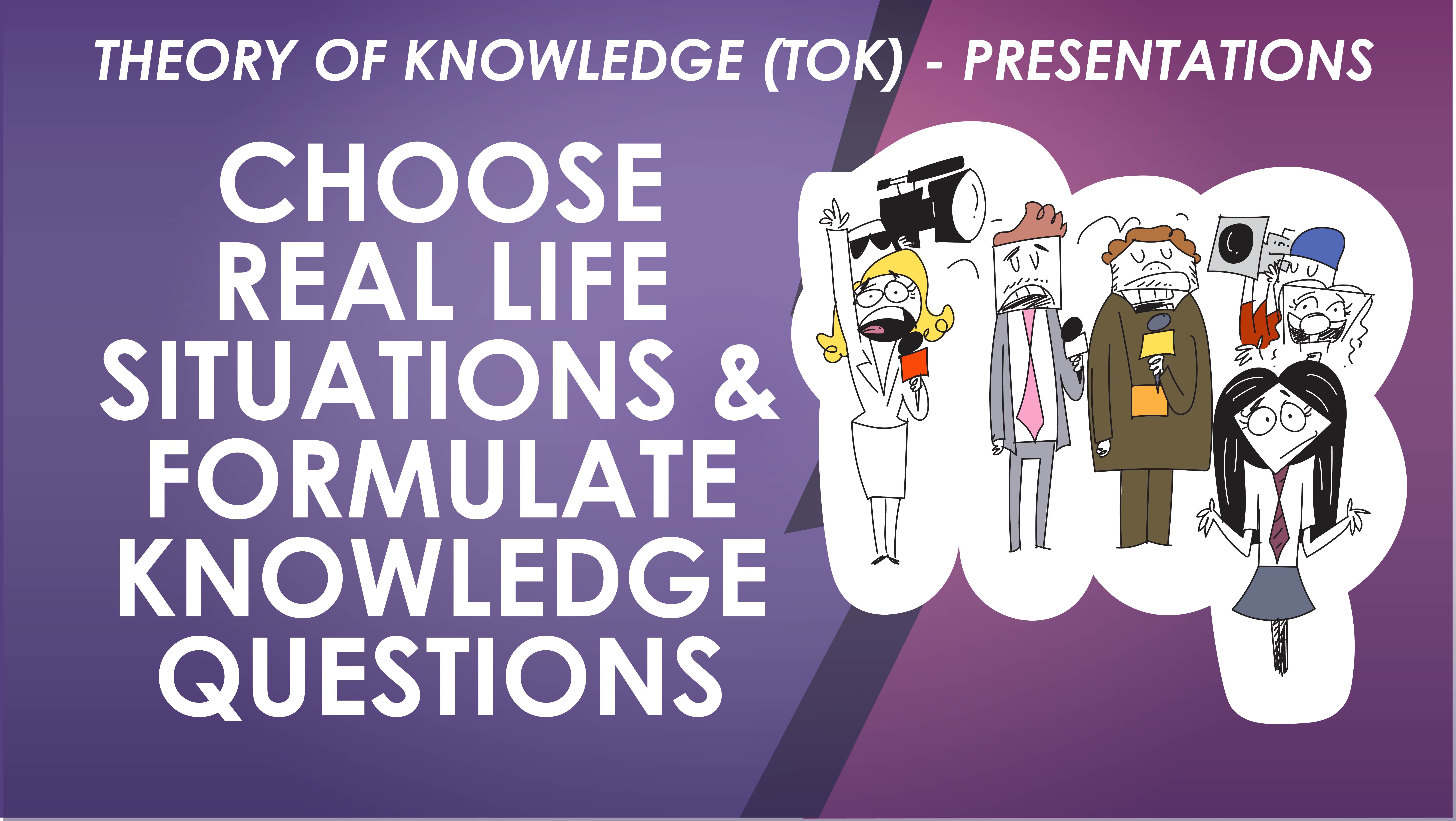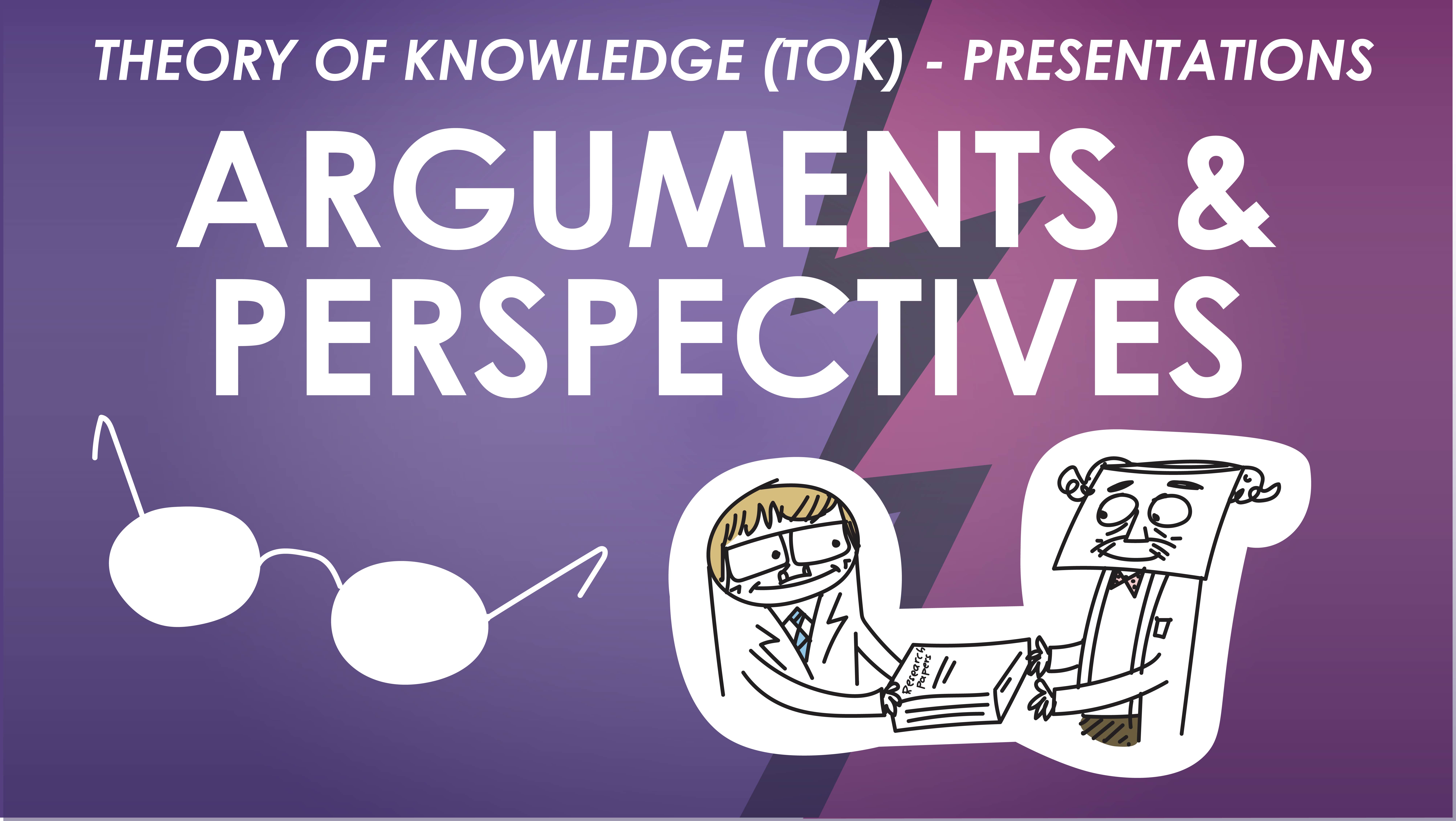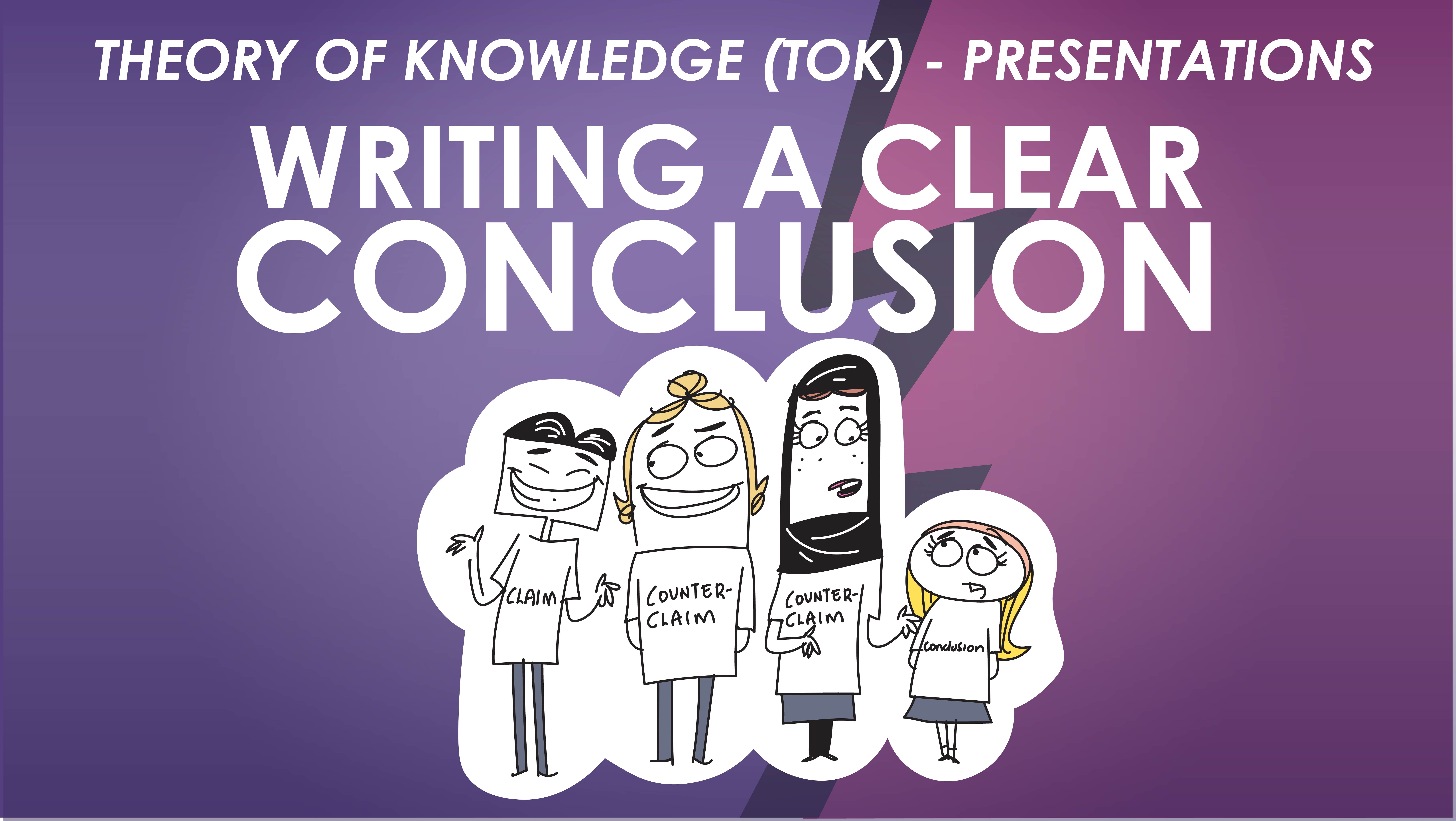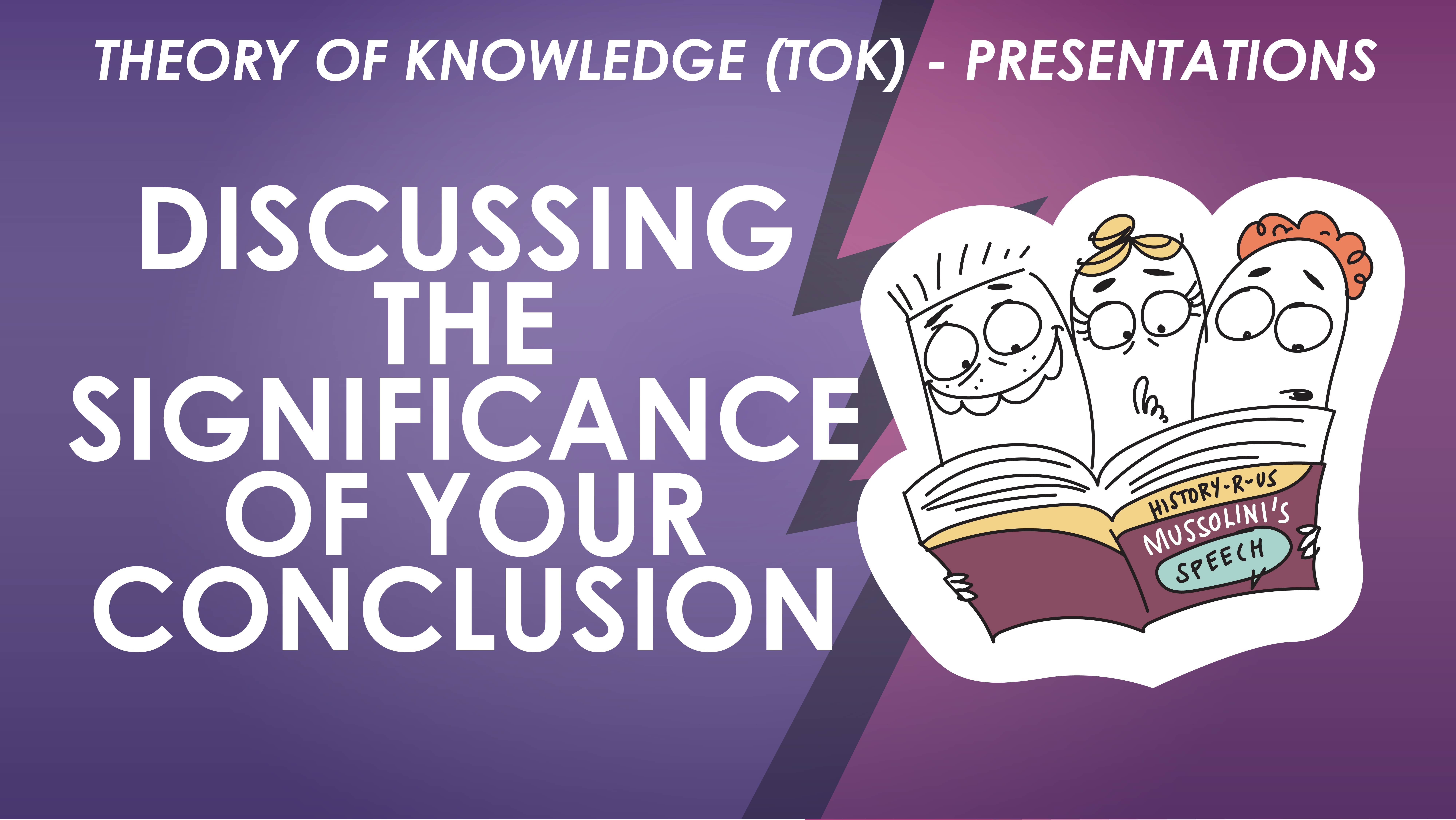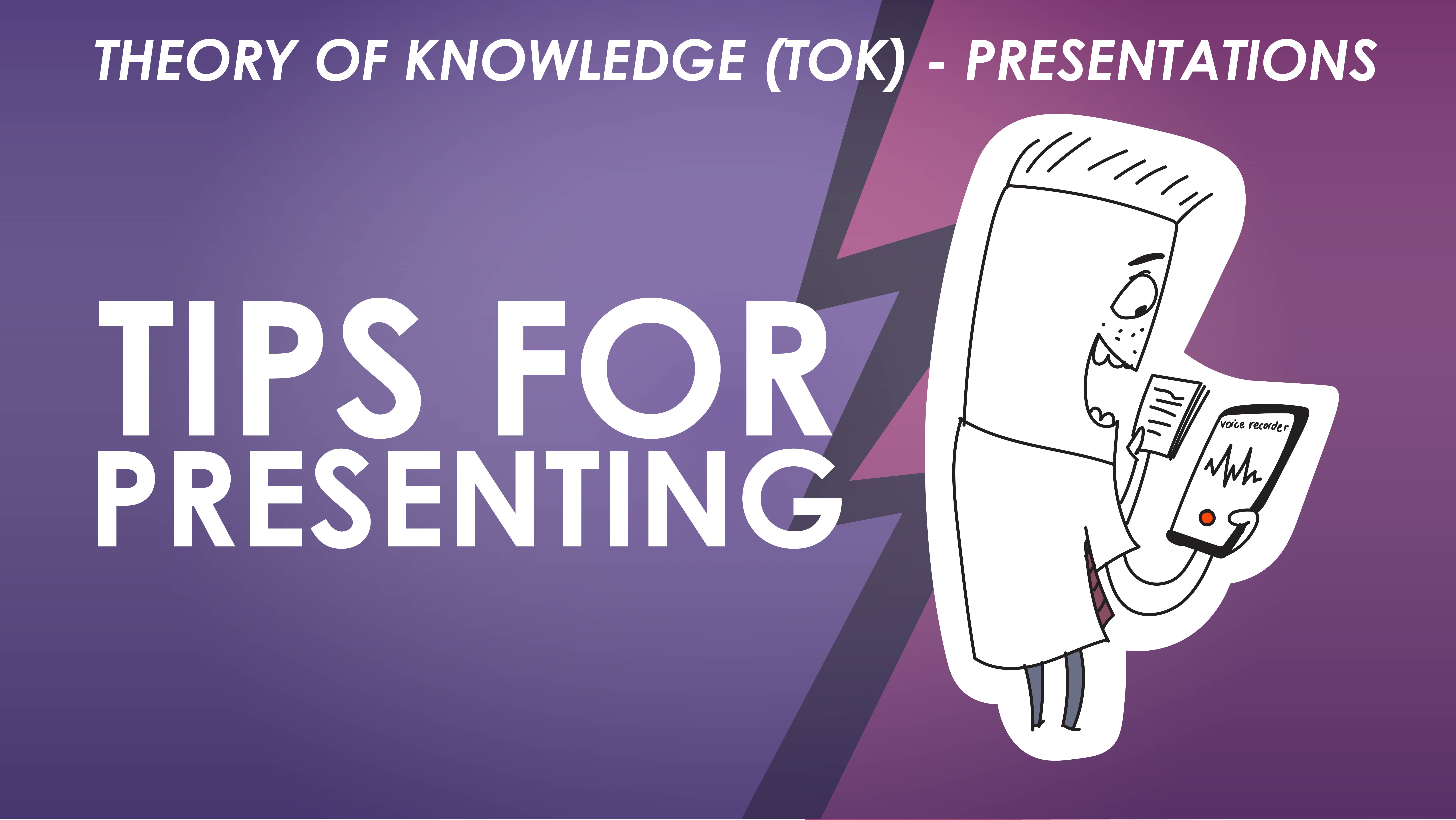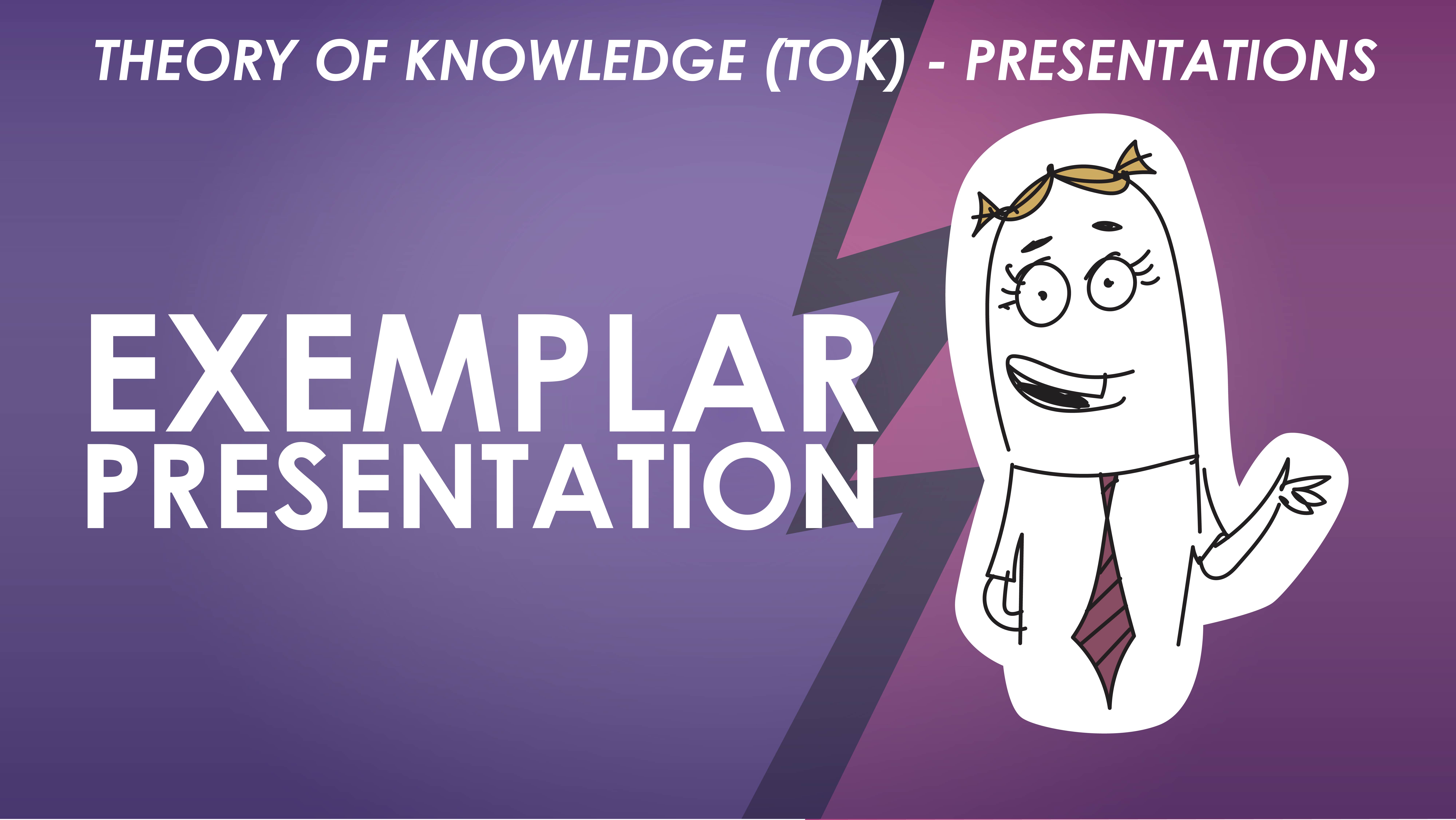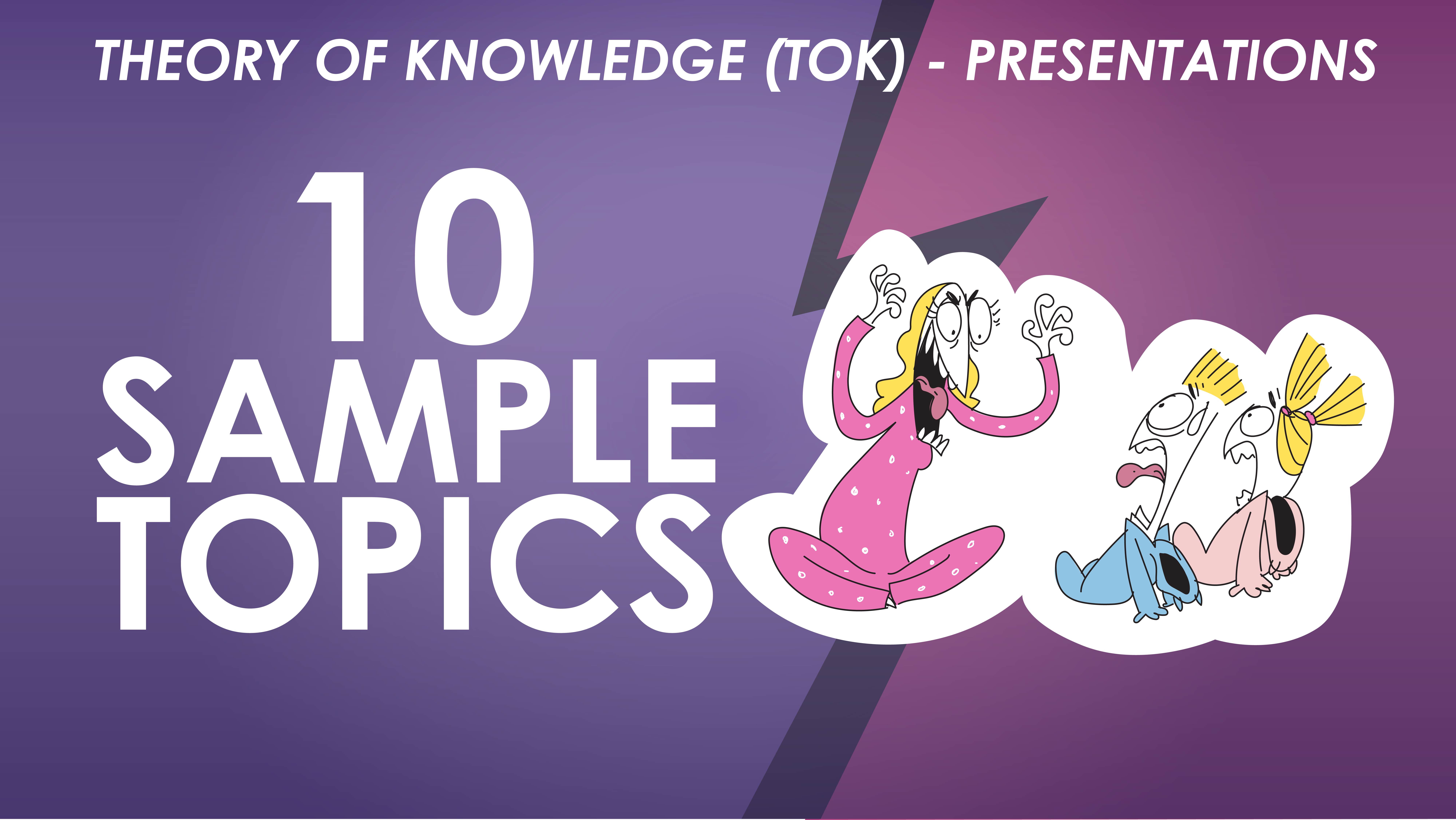IB TOK - Presentations
IB TOK - Presentations | IB Theory of Knowledge (TOK)
 2:14:33
2:14:33
Guide for Students and Educators
Guide for Students
Nothing blows your mind like studying the IB Theory of Knowledge course.
The TOK Presentation is about applying your understanding of TOK terminology and ideas to the real world.
Watch our IB Theory of Knowledge (TOK) Presentations series to prepare for your internal assessment. This series shows you how to plan, write and present an excellent presentation.
Important information about the IB Theory of Knowledge Guide (2015 – 2021)
The lessons in this series cover requirements of the TOK Presentation as described in the guide:
1. Marking Criteria
2. Presentation Structure
3. Real-life Situations and Knowledge Questions
4. Arguments and Perspectives
5. Crafting Conclusions
6. Conclusion Significance
7. Presenting Your TOK Presentation
8. Exemplar Presentation
9. Sample Topics
Here’s how to get the most out of our videos:
1. Watch our lesson on Marking Criteria before you start working on the TOK Presentation at school. This lesson introduces you to the TOK Presentation Assessment Instrument, which is used to mark the presentation.
2. Watch our lesson on an Exemplar Presentation to get a sneak-peek of what the final presentation should look like.
3. Watch our lesson on Presentation Structure when you start planning your presentation. Learn about the overall structure and how many words to allocate to each section.
4. Watch our lessons on Real-life Situations and Knowledge Questions and Sample Topics when it is time to pick a real-life situation and identify a knowledge question.
5. Watch our lesson on Arguments and Perspectives as you develop the body of your presentation.
6. Watch our lessons on Crafting Conclusions and Conclusion Significance as you wrap up your presentation.
7. Watch our lessons on Presenting Your TOK Presentation and an Exemplar Presentation to learn how to keep your audience engaged. We also discuss how to fill in the TOK Presentation Planning Document (TK/PPD).
8. Revisit our lesson on Marking Criteria to double-check that your presentation meets the top assessment requirements.
Guide for Educators
The IB Theory of Knowledge (TOK) Presentations series prepares students to apply their understanding of TOK terminology and ideas to the real world.
We know that students need guidance to plan, write and present their TOK Presentations. Each animated video includes engaging explanations and helpful examples for your students.
Important information about the IB Theory of Knowledge Guide (2015 – 2021)
The lessons in this series cover requirements of the TOK Presentation as described in the guide:
1. Marking Criteria
2. Presentation Structure
3. Real-life Situations and Knowledge Questions
4. Arguments and Perspectives
5. Crafting Conclusions
6. Conclusion Significance
7. Presenting Your TOK Presentation
8. Exemplar Presentation
9. Sample Topics
Here’s how to get the most out of our videos:
1. Integrate our videos into your school’s IB Diploma Programme
We recommend that you integrate this series into your lessons covering the TOK Presentation. We guide students through key terms and concepts related to the TOK Presentation. We also help students to develop their critical thinking skills.
Sign up your school with Schooling Online and set lessons for students to watch in class and at home.
2. Show our videos in your lessons and/or assign videos to view at home
Feel free to show the TOK Presentations videos in your lessons. We have included a recommended viewing order below.
Turn your classroom into an interactive learning environment by watching each video in short segments. Pause the video at the beginning or end of each key section and open a discussion with your class. This is the perfect time for students to ask questions and clear up confusions regarding the assessment.
Alternatively, you can use our videos as part of a flipped classroom approach. Students can watch one or more videos at home to learn about aspects of the presentation. For example, students can watch the lessons on Real-life Situations and Knowledge Questions and Sample Topics, then come up with their own real-life situations and knowledge questions. Afterwards, class time can be dedicated to discussing whether these ideas are appropriate for the presentation.
These videos can also be assigned to view for homework and revision, as many students will need to refer to each lesson several times.
Recommended viewing order for the TOK Presentations series:
a. You can show our lesson on Marking Criteria before your students start working on the TOK Presentation at school. This lesson introduces students to the TOK Presentation Assessment Instrument, which is used to mark the presentation.
b. You can show our lesson on an Exemplar Presentation to give your students a sneak-peek of what the final presentation should look like.
c. You can show our lesson on Presentation Structure when your students start planning their presentations. Your students can learn about the overall structure and how many words to allocate to each section.
d. You can show our lessons on Real-life Situations and Knowledge Questions and Sample Topics when it’s time for your students to pick a real-life situation and identify a knowledge question.
e. You can show our lesson on Arguments and Perspectives to help your students develop the body of their presentation.
f. You can show our lessons on Crafting Conclusions and Conclusion Significance to help your students complete their presentations.
g. You can show our lessons on Presenting Your TOK Presentation and an Exemplar Presentation to teach your students how to keep their audiences engaged. We also discuss how to fill in the TOK Presentation Planning Document (TK/PPD).
h. We encourage your students to revisit our lesson on Marking Criteria to double-check that their presentations meet the top assessment requirements.
Is your TOK textbook weighing you down? We’ll help you out.
This Tackling TOK series will guide you through the IB Theory of Knowledge course. It’s time to learn about areas of knowledge, ways of knowing, knowledge questions and knowledge claims.
This series is split into three modules: TOK Basics, TOK Presentations and TOK Essays.
TOK Basics includes ten lessons on basic TOK terms and concepts. We’ll answer a big question – “what is TOK?” We’ll also explore eight areas of knowledge (AOK) and eight ways of knowing (WOK). Remember to consider issues from a range of perspectives!
TOK Presentations includes nine lessons on the internal assessment. We’ll cover the TOK presentation assessment instrument and recommended structure. We’ll also offer tips for giving the presentation, along with an exemplar presentation and sample topics.
TOK Essays includes seven lessons on the essay and how it’s assessed. We’ll introduce the purpose of the TOK essay. We’ll also guide you through choosing a terrific title and structuring the essay. Along the way, we’ll provide lots of helpful tips and examples.



